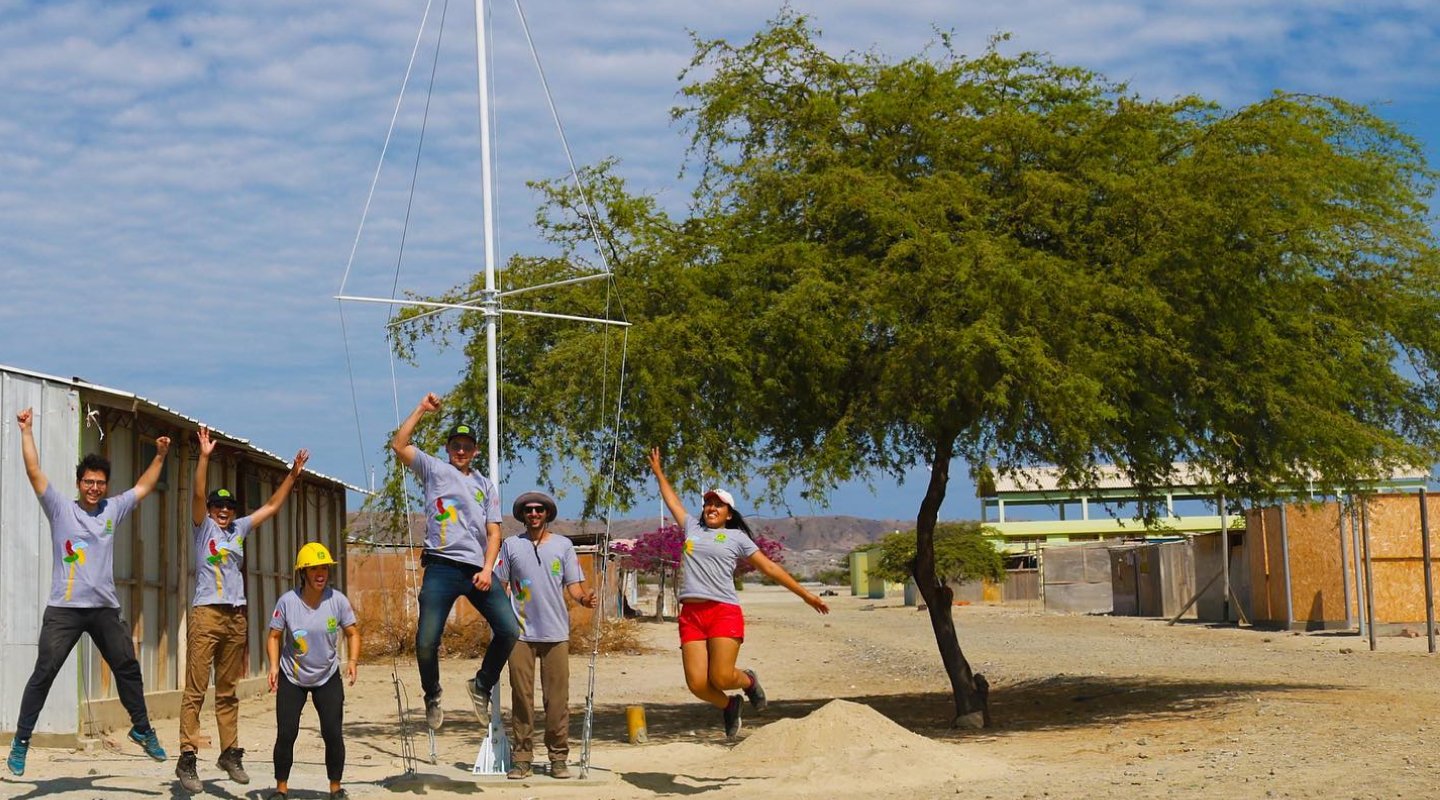
Playa Blanca
Playa Blanca Case Study
By Leah Kunkel, St. Louis University
Extract:
This report evaluates the community of Playa Blanca, Peru, to see if it can indeed be considered a sustainable community. This community is in the process of converting some of their energy dependence from diesel generators to wind energy through the efforts of the non-profit WindAid, which operates out of Trujillo, Peru. The Playa Blanca community was evaluated over three different time periods. The initial energy usage of the community members using only diesel generators and zero sustainable systems was studied first, followed by the current energy with 15/50 houses connected to wind turbines, and finally the estimated energy usage once all 50 houses are connected to wind turbines (most likely around 2017). These estimations were done using the format introduced by David MacKay, in units of kWh/d/p. The results of this study are as follows:
Initial Usage:
5.5kWh/d/p from a diesel generator alone, used for 4 hours per day. For the entire community, this is 1,100kWh/d.
Current Usage:
Households with wind turbines (15): 3kWh/d/p from wind energy, 2.5kWh/d/p from a diesel generator
Households without wind turbines (35): 5.5kWh/d/p from a diesel generator
Entire community wind energy: 180kWh/d/p
Entire community diesel generator usage: 920kWh/d/p
Future Usage:
Households with wind turbines (15): 3kWh/d/p from wind energy , 2.5kWh/d/p from a diesel generator
Entire community wind energy: 600kWh/d/p
Entire community wind energy: 180kWh/d/p
Entire community diesel generator usage: 500kWh/d/p
These conclusions were made assuming that each household uses a diesel generator for 4 hours per day. In reality only 1 in 5 homes in the community have a diesel generator. This assumption was made to account for community growth, and increased energy dependence as the community modernizes. Energy supplied by the wind turbine was also assumed to be constant. Playa Blanca is located on the coast of the Pacific Ocean, receiving relatively strong, consistent wind. However, even communities like Playa Blanca have calm days with little wind. Based on the numbers shown above, it is clear that Playa Blanca is on it’s way to becoming a very sustainable community. Even with a five-fold increase in diesel generator usage from actual current values (in which 1 in 5 people have a diesel generator), Playa Blanca will be able to produce over 50% of their energy from wind. Playa Blanca also employs various solar arrays on their community center, church, and school, but those values were not studied in this report. The majority of these values were obtained through personal interviews with WindAid staff, who have been with the Playa Blanca community for over two years.
Impact
Economic Saving:
As I mentioned very briefly before, Playa Blanca locals started to use diesel generators back in 2005.
A typical diesel generator is 5000W, with a 10L tank. A 10L tank of diesel, assuming the energy density of diesel to be 11kWh/L (MacKay), provides 110kWh of energy.
With a 5kW generator, this tank of energy will last the family about 5 days, when using the generator for 4 hours per day (the time locals typically use around mealtime for cooking).
The energy provided by the engine over five days gives 22kWh each day.
With generally four people to a home, the initial energy usage of a person living in Playa Blanca was 5.5kWh/d/p.
Now...
The cost to fill a 10L tank is $15
Families can make 800 soles ($228.30) per month, considering this as a good month because sometimes they can fish very effectively, and sometimes they cannot for long periods, meaning that their incomes are highly variable.
These families have to refill 6 times per month, which in total is 315 Soles ($90) per month. That’s % of their incomes (These calculations do not include the initial cost of the generator, estimated at about $1000).
Plus families spend 15-80/s per month on candles, at 10-20% of their monthly income.
WindAid Turbines & Solar Panels: There are currently 24 wind turbines operating in Playa Blanca
Even if our wind turbines are not able to provide the same energy that the diesel generator is typically used for, this saves the families 285 soles per month (because they have to pay 30 soles per month to the committee that is in charge to supervise that all systems work). Also, with their solar panels energy families were able to operate more than lights, such as: television, stereo, blender, etc. All this makes significant savings as a result of the wind and solar systems. Besides, according to testimonies, some of the families that have a restaurant or small groceries expressed that thanks to the light service they now can also operate during the nights for their clients and generate more incomes.
Educational Impact
The people of Playa Blanca, adults and kids, has receipted frequently our workshops and trainings in order to understand:
The importance of renewable energy.
The importance of taking care of our environment.
How our wind turbines operate.
How to do maintenance to our wind turbines
Education is commonly measured only as a perceived benefit by parents, as linking school performance and attendance to electrification is extremely difficult. To better understand the impacts on education, users should be asked about the studying habits of their children to determine if they do study at night. According to the Duke University, their study confirms that parents think that children’s education is a major benefit, citing positive impacts on children’s studying. Some of them mentioned that they use the TV or their cellphones to teach them skills such as painting for example.
